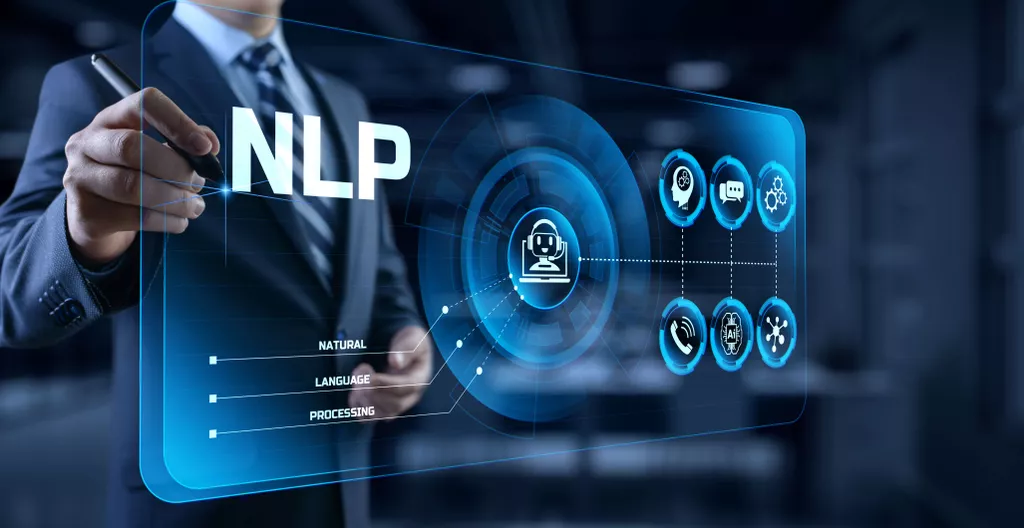
If you’re interested in using some of these techniques with Python, take a look at the Jupyter Notebook about Python’s natural language toolkit (NLTK) that I created. You can also check out my blog post about building neural networks with Keras where I train a neural network to perform sentiment analysis. We can do semantic analysis automatically works with the help of machine learning algorithms by feeding semantically enhanced machine learning algorithms with samples of text data, we can train machines to make accurate predictions based on their past results. The objective of the course is to learn about various topics in computational semantics and its importance in natural language processing methodology and research.
What is neuro semantics?
What is Neuro-Semantics? Neuro-Semantics is a model of how we create and embody meaning. The way we construct and apply meaning determines our sense of life and reality, our skills and competencies, and the quality of our experiences. Neuro-Semantics is firstly about performing our highest and best meanings.
This representation was somewhat misleading, since translocation is really only an occasional side effect of the change that actually takes place, which is the ending of an employment relationship. See Figure 1 for the old and new representations from the Fire-10.10 class. In order to accommodate such inferences, the event itself needs to have substructure, a topic we now turn to in the next section. The semantics, or meaning, of an expression in natural language can
be abstractly represented as a logical form. Once an expression
has been fully parsed and its syntactic ambiguities resolved, its meaning
should be uniquely represented in logical form. Conversely, a logical
form may have several equivalent syntactic representations.
The Structure of Personality (Nlp and Neuro-Semantics Approach)
It is the driving force behind many machine learning use cases such as chatbots, search engines, NLP-based cloud services. Furthermore, once calculated, these (pre-computed) word embeddings can be re-used by other applications, greatly improving the innovation and accuracy, effectiveness, of NLP models across the application landscape. With the goal of supplying a domain-independent, wide-coverage repository of logical representations, we have extensively revised the semantic representations in the lexical resource VerbNet (Dang et al., 1998; Kipper et al., 2000, 2006, 2008; Schuler, 2005). Today, semantic analysis methods are extensively used by language translators. Earlier, tools such as Google translate were suitable for word-to-word translations.
Clearly, making sense of human language is a legitimately hard problem for computers. Natural language processing (NLP) and Semantic Web technologies are both Semantic Technologies, but with different and complementary roles in data management. In fact, the combination of NLP and Semantic Web technologies enables enterprises to combine structured and unstructured data in ways that are simply not practical using traditional tools. Let’s look at some of the most popular techniques used in natural language processing.
Natural Language in Search Engine Optimization (SEO) — How, What, When, And Why
Even including newer search technologies using images and audio, the vast, vast majority of searches happen with text. To get the right results, it’s important to make sure the search is processing and understanding both the query and the documents. While NLP is all about processing text and natural language, NLU is about understanding that text. metadialog.com Of course, we know that sometimes capitalization does change the meaning of a word or phrase. It takes messy data (and natural language can be very messy) and processes it into something that computers can work with. NLP and NLU make semantic search more intelligent through tasks like normalization, typo tolerance, and entity recognition.
However, with the advancement of natural language processing and deep learning, translator tools can determine a user’s intent and the meaning of input words, sentences, and context. Approaches such as VSMs or LSI/LSA are sometimes as distributional semantics and they cross a variety of fields and disciplines from computer science, to artificial intelligence, certainly to NLP, but also to cognitive science and even psychology. The methods, which are rooted in linguistic theory, use mathematical techniques to identify and compute similarities between linguistic terms based upon their distributional properties, with again TF-IDF as an example metric that can be leveraged for this purpose. The first major change to this representation was that path_rel was replaced by a series of more specific predicates depending on what kind of change was underway.
Customers who bought this item also bought
However, building a whole infrastructure from scratch requires years of data science and programming experience or you may have to hire whole teams of engineers. Predictive text, autocorrect, and autocomplete have become so accurate in word processing programs, like MS Word and Google Docs, that they can make us feel like we need to go back to grammar school. You often only have to type a few letters of a word, and the texting app will suggest the correct one for you. And the more you text, the more accurate it becomes, often recognizing commonly used words and names faster than you can type them. About the AuthorAaron (Ari) Bornstein is an avid AI enthusiast with a passion for history, engaging with new technologies and computational medicine. As an Open Source Engineer at Microsoft’s Cloud Developer Advocacy team, he collaborates with Israeli Hi-Tech Community, to solve real world problems with game changing technologies that are then documented, open sourced, and shared with the rest of the world.
This includes cybernetics, computer science, neuro-biology, family systems, anthropology, etc. In the beginning, NLP sought to avoid all theory, explanatory models, and “the why” question by presenting itself as strictly focused on how do you do that? It explored how the body (Neuro, e.g. the nervous system, physiology, neurology, etc.) gets Programmed by the use of various Languages(linguistics).
The Structure of Personality: Modeling “Personality” Using Nlp and Neuro-Semantics
We introduce concepts and theory throughout the course before backing them up with real, industry-standard code and libraries. In fact, this is one area where Semantic Web technologies have a huge advantage over relational technologies. By their very nature, NLP technologies can extract a wide variety of information, and Semantic Web technologies are by their very nature created to store such varied and changing data. In cases such as this, a fixed relational model of data storage is clearly inadequate. ” At the moment, the most common approach to this problem is for certain people to read thousands of articles and keep this information in their heads, or in workbooks like Excel, or, more likely, nowhere at all. In 1950, the legendary Alan Turing created a test—later dubbed the Turing Test—that was designed to test a machine’s ability to exhibit intelligent behavior, specifically using conversational language.
Other classification tasks include intent detection, topic modeling, and language detection. Named entity recognition is one of the most popular tasks in semantic analysis and involves extracting entities from within a text. As we have seen our previous post although state of the art neural techniques such as attention have contributed to stronger NLP models they still fall short of capturing a solid understanding of language, resulting in often unexpected results. “Integrating generative lexicon event structures into verbnet,” in Proceedings of the Eleventh International Conference on Language Resources and Evaluation (LREC 2018) (Miyazaki), 56–61. In thirty classes, we replaced single predicate frames (especially those with predicates found in only one class) with multiple predicate frames that clarified the semantics or traced the event more clearly. For example, (25) and (26) show the replacement of the base predicate with more general and more widely-used predicates.
Natural Language Processing – Semantic Analysis
Authority_relationship shows a stative relationship dynamic between animate participants, while has_organization_role shows a stative relationship between an animate participant and an organization. Lastly, work allows a task-type role to be incorporated into a representation (he worked on the Kepler project). By knowing the structure of sentences, we can start trying to understand the meaning of sentences. We start off with the meaning of words being vectors but we can also do this with whole phrases and sentences, where the meaning is also represented as vectors. And if we want to know the relationship of or between sentences, we train a neural network to make those decisions for us.
What is syntax and semantics in NLP?
Syntax is the grammatical structure of the text, whereas semantics is the meaning being conveyed.
Sentiment analysis (seen in the above chart) is one of the most popular NLP tasks, where machine learning models are trained to classify text by polarity of opinion (positive, negative, neutral, and everywhere in between). Since the advent of word2vec, neural word embeddings have become a go to method for encapsulating distributional semantics in NLP applications. This series will review the strengths and weaknesses of using pre-trained word embeddings and demonstrate how to incorporate more complex semantic representation schemes such as Semantic Role Labeling, Abstract Meaning Representation and Semantic Dependency Parsing into your applications. It is primarily concerned with the literal meaning of words, phrases, and sentences.
Datasets
That way,
extremely similar words (words whose embeddings point in the same
direction) will have similarity 1. For example, we see that both mathematicians and physicists
can run, so maybe we give these words a high score for the “is able to
run” semantic attribute. Think of some other attributes, and imagine
what you might score some common words on those attributes.
How to optimize for entities – Search Engine Land
How to optimize for entities.
Posted: Wed, 17 May 2023 07:00:00 GMT [source]
These relations are defined by different linguistically derived semantic grammars. Think of a predicate as a function and the semantic roles as class typed arguments. AllenNLP offers a state of the art SRL tagger that can be used to map semantic relations between verbal predicates and arguments.
Other NLP And NLU tasks
Like the classic VerbNet representations, we use E to indicate a state that holds throughout an event. For this reason, many of the representations for state verbs needed no revision, including the representation from the Long-32.2 class. Since there was only a single event variable, any ordering or subinterval information needed to be performed as second-order operations. For example, temporal sequencing was indicated with the second-order predicates, start, during, and end, which were included as arguments of the appropriate first-order predicates.
- With these two technologies, searchers can find what they want without having to type their query exactly as it’s found on a page or in a product.
- Here the generic term is known as hypernym and its instances are called hyponyms.
- To fully comprehend human language, data scientists need to teach NLP tools to look beyond definitions and word order, to understand context, word ambiguities, and other complex concepts connected to messages.
- Lexical semantics plays an important role in semantic analysis, allowing machines to understand relationships between lexical items like words, phrasal verbs, etc.
- In multi-subevent representations, ë conveys that the subevent it heads is unambiguously a process for all verbs in the class.
- These entities are connected through a semantic category such as works at, lives in, is the CEO of, headquartered at etc.
All factors considered, Uber uses semantic analysis to analyze and address customer support tickets submitted by riders on the Uber platform. The analysis can segregate tickets based on their content, such as map data-related issues, and deliver them to the respective teams to handle. The platform allows Uber to streamline and optimize the map data triggering the ticket. Relationship extraction is a procedure used to determine the semantic relationship between words in a text.
Revolutionizing Machine Translation with ChatGPT-4: Breaking … – CityLife
Revolutionizing Machine Translation with ChatGPT-4: Breaking ….
Posted: Fri, 26 May 2023 07:00:00 GMT [source]
Several companies are using the sentiment analysis functionality to understand the voice of their customers, extract sentiments and emotions from text, and, in turn, derive actionable data from them. It helps capture the tone of customers when they post reviews and opinions on social media posts or company websites. These chatbots act as semantic analysis tools that are enabled with keyword recognition and conversational capabilities. These tools help resolve customer problems in minimal time, thereby increasing customer satisfaction. The semantic analysis uses two distinct techniques to obtain information from text or corpus of data. The first technique refers to text classification, while the second relates to text extractor.
We attempted to replace these with combinations of predicates we had developed for other classes or to reuse these predicates in related classes we found. Once our fundamental structure was established, we adapted these basic representations to events that included more event participants, such as Instruments and Beneficiaries. We applied them to all frames in the Change of Location, Change of State, Change of Possession, and Transfer of Information classes, a process that required iterative refinements to our representations as we encountered more complex events and unexpected variations. Other classes, such as Other Change of State-45.4, contain widely diverse member verbs (e.g., dry, gentrify, renew, whiten).
- As such, much of the research and development in NLP in the last two
decades has been in finding and optimizing solutions to this problem, to
feature selection in NLP effectively.
- Natural Language Processing on the other hand deals with trying to automatically understand the meaning of natural language texts.
- Text classification allows companies to automatically tag incoming customer support tickets according to their topic, language, sentiment, or urgency.
- See Figure 1 for the old and new representations from the Fire-10.10 class.
- In the rest of this article, we review the relevant background on Generative Lexicon (GL) and VerbNet, and explain our method for using GL’s theory of subevent structure to improve VerbNet’s semantic representations.
- Additional processing such as entity type recognition and semantic role labeling, based on linguistic theories, help considerably, but they require extensive and expensive annotation efforts.
What is an example of semantic analysis in NLP?
The most important task of semantic analysis is to get the proper meaning of the sentence. For example, analyze the sentence “Ram is great.” In this sentence, the speaker is talking either about Lord Ram or about a person whose name is Ram.




